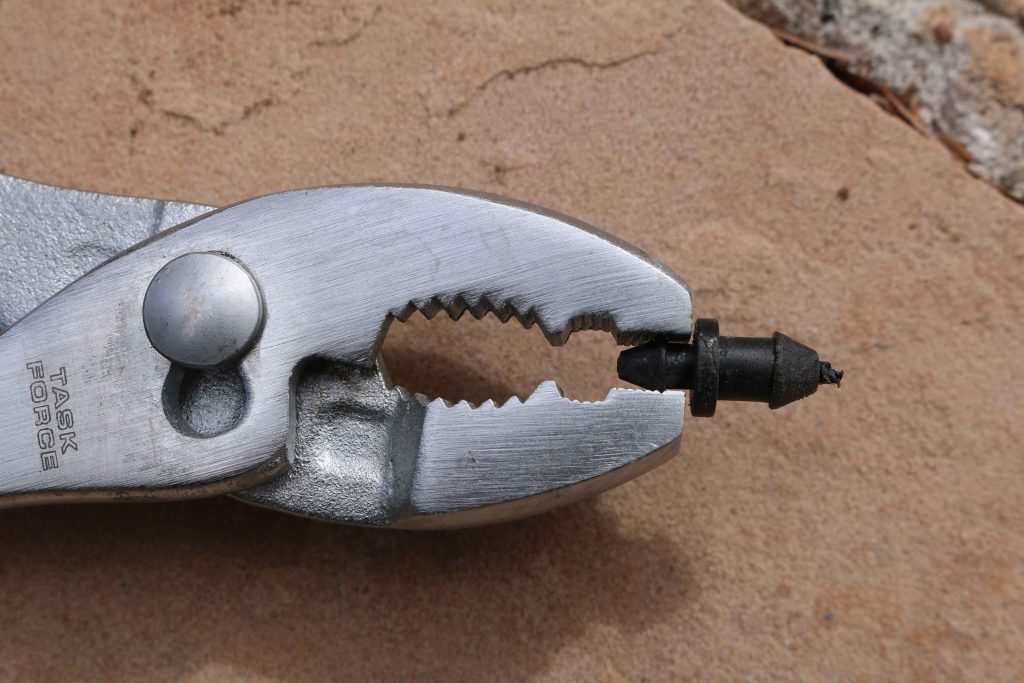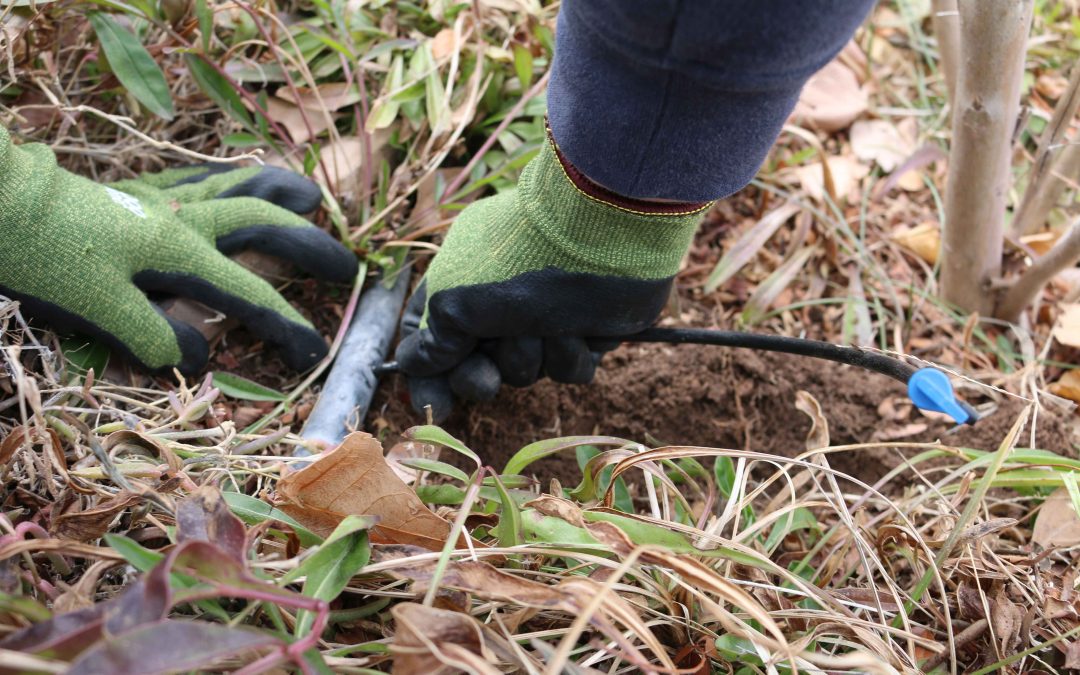What should every home owner know about simple irrigation maintenance?
The most important thing is to visually inspect your system periodically. Usually, irrigation runs during the middle of the night and we’re unaware of how well (or how poorly) it’s working. Turn on each zone and observe its operation. Look for leaks in your valve boxes – if there’s water in the box, you probably have a leak.
With sprinklers:
Look for broken or tilted heads and nozzles that should be adjusted to address overspray. If water continues to drain from one of your sprinklers after the zone has shut down, you may have a low head drainage problem. To fix this, install a simple check valve, which typically screws into the lower part of the sprinkler head. Ask your local irrigation supplier for a check valve recommended for your situation.
With drip irrigation:
How to unclog your button or flag emitters.
Button emitters are not easy to unclog. Often, it’s easiest to simply remove a clogged button emitter and replace it.
Flag emitters can be unclogged as follows:
- While water is flowing through the emitter, twist the colored flag piece located on top of the emitter so that it can be removed.
- Allow water to flow out the top of the emitter for 10-15 seconds with the flag piece removed.
- Block flow from the top of the emitter to send water through the side orifice for 10-15 seconds.
- Twist the flag piece back into place to resume typical irrigation (not pictured).

How to add an emitter?
- Using a punch tool, make a hole where you will connect the spaghetti tubing
- Attach the spaghetti tubing to the lateral line using a barbed connector
- Run the spaghetti tubing through a small trench to where you want the emitter to apply water – at the dripline of the plant is usually best

How to repair a poly tube if it’s been punctured?
- Locate the damaged section of poly
- Cut out the damaged section
- Use a fitting – there are many types that will work – to join the ends

What is a goof plug and how to install it?
- It’s a simple, 2-sided plastic piece used to plug a small opening in drip irrigation lines

Goof plugs can be used to stop water flow through spaghetti tubing, as follows:
- Locate tubing to plug (cut off emitter if necessary)
- Twist small end of goof plug into spaghetti tubing opening
- Enjoy your water conservation!

Goof plugs can be used to stop water flow through distribution line, as follows:
- Locate tubing to plug
- Twist large end of goof plug into distribution line

Using these few simple tricks, you can easily manipulate water flow in your landscape for maximum system efficiency.

Author: Laura Ferenchak, Irrigation Efficiency Specialist with Albuquerque Bernalillo County Water Utility Authority

